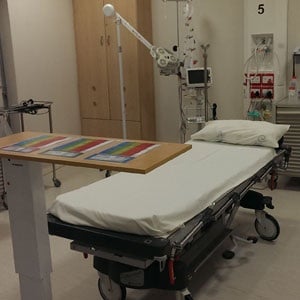
Only 12% of doctors and less than 20% of nurses in the public sector work in rural areas, despite the fact that people living in these areas make up almost half of the country’s population. This is according to a report, Protecting Rural Healthcare in Times of Economic Crisis launched by the Rural Health Advocacy Project (RHAP) in Johannesburg on Tuesday.
The report includes a detailed summary of South Africa’s health and economic context as well as examples from other countries on how they dealt with access to healthcare in a tough economic climate.
One of the NHI’s biggest challenges is the unfair distribution of healthcare workers, said RHAP’s Russell Rensburg at the launch. He said to be in-line with the NHI, the distribution must be informed by equity, but at the moment most healthcare workers were located in urban settings and as one moved further and further away from the centre, the numbers fall.
Rensburg said South Africa has 42 health information systems in the public sector and multiple systems in the private sector making it “very difficult to get a complete picture of what our overall health needs are and what the best response is”.
“You can only measure what you can manage and you can only manage what you can measure,” he explained.
Do health workers reject rural postings?
Rensburg said healthcare workers had a responsibility to practise in areas where the need was greatest but many were unwilling to do so.
Compulsory community service is a strategy to try to increase the number of healthcare workers in rural areas, but, he said, every year without fail, a significant number of medical graduates reject rural posts.
RHAP’s Marije Versteeg said other issues played a role and sometimes people arrive in rural areas to take up an internship or community service post, only to find the position does not exist.
Occasionally this was due to administrative bungles, but more often this problem was caused by inadequate budgets compounded by faulty management of this meagre allocation.
Austerity should never disable the workforce
In response to slow economic growth since the 2008 global financial crisis, the South African government implemented austerity measures to contain costs, including the freezing or cutting of posts for medical personnel, according to the report. However, sacrificing funding directed at the health workforce only weakened the system and worsened access.
The report noted that the negative impacts on health caused by a continued “constrained fiscal environment” will become more apparent as resource demands increase with the implementation of the NHI.“At a minimum, extra resources are needed to account for the effects of inflation on prices in the health sector.
Realistically though, more healthcare workers are always necessary to broaden access to services and to account for ever-increasing demand.”Is a ‘different way’ the solution?
Rensburg suggested the current setup needed to be rethought as South Africa moved closer towards the implementation of the NHI.
“The government keeps talking about expansion but where is the money to back this? It will take at least five to 10 years until the NHI is implemented and, in the meantime, we need a different way of approaching health. This means more (equitably distributed) healthcare workers, and more money, especially in tough economic times,” he said.
– Health-e News




 Publications
Publications
 Partners
Partners










